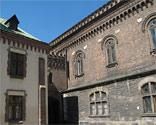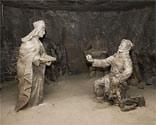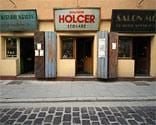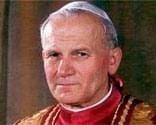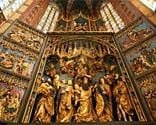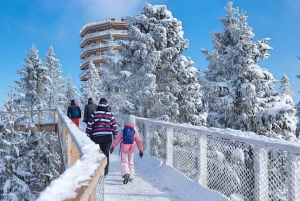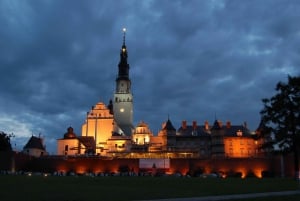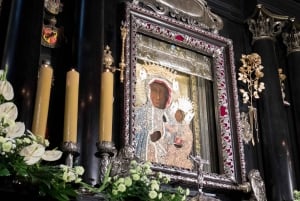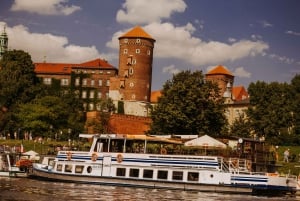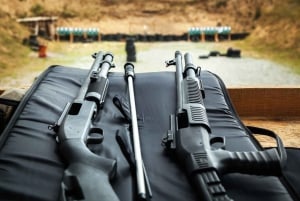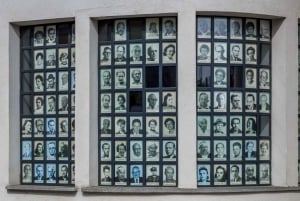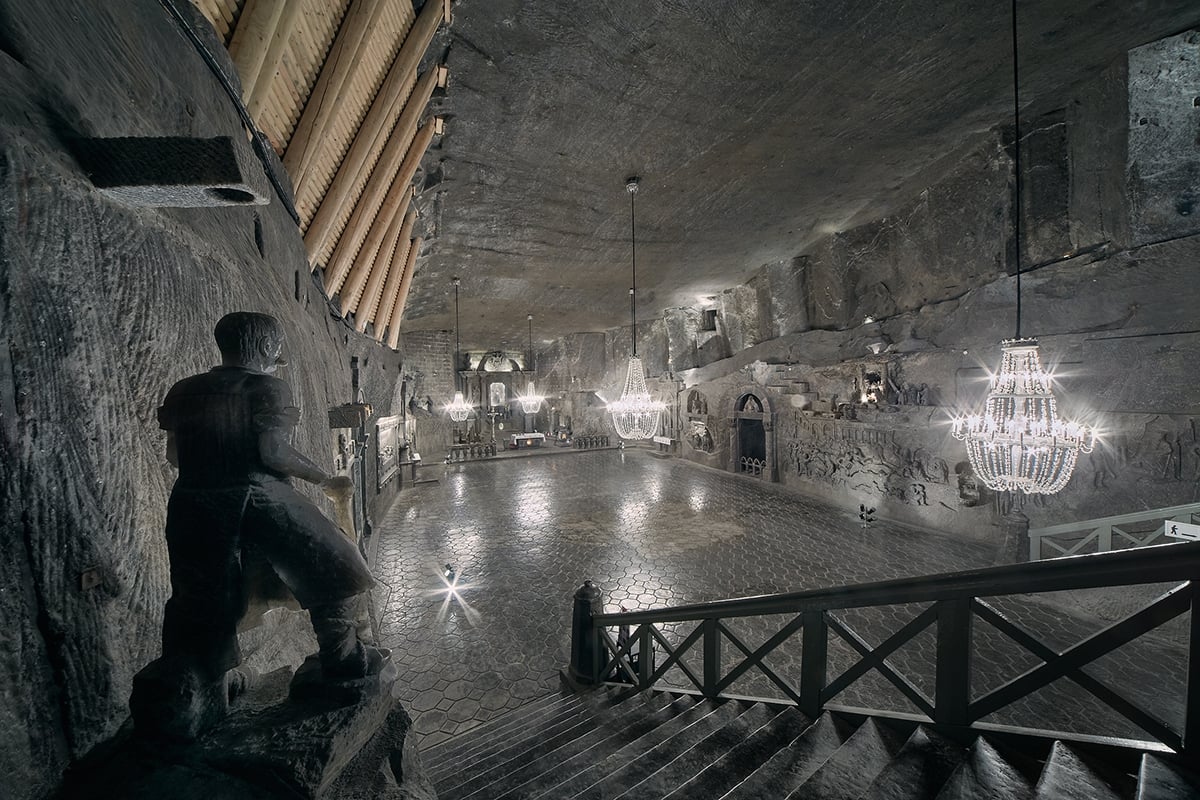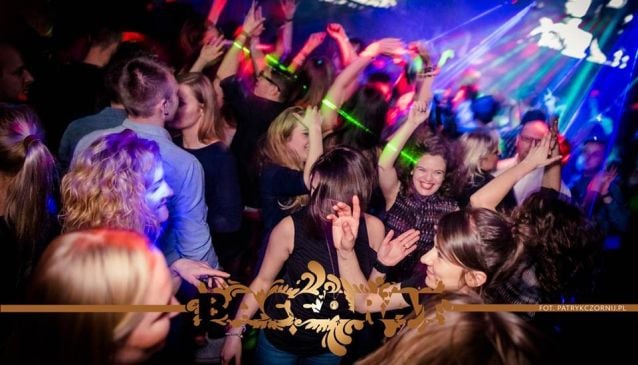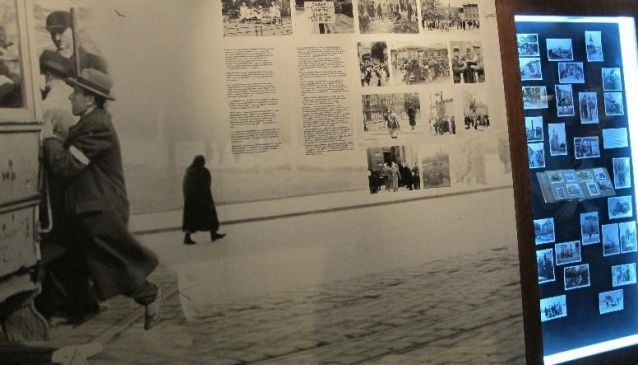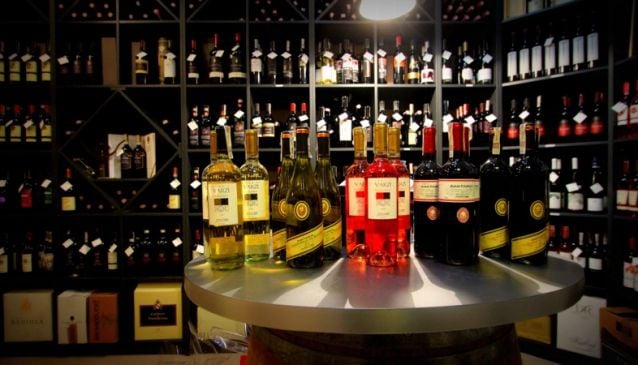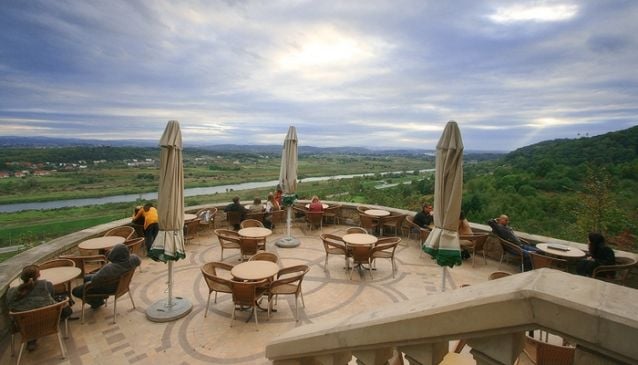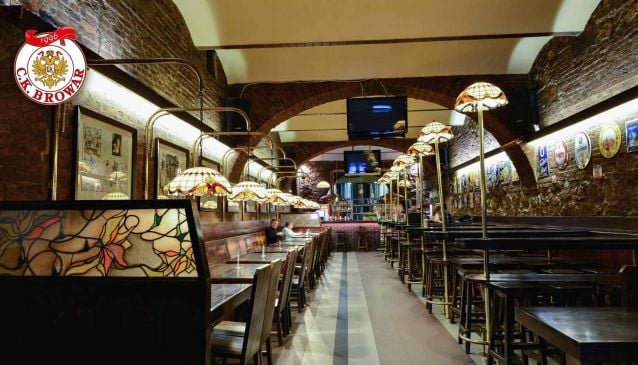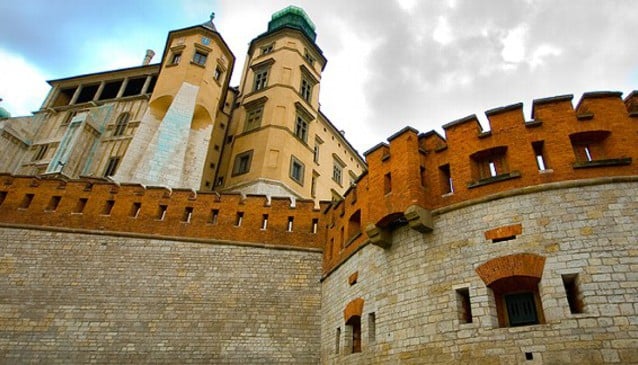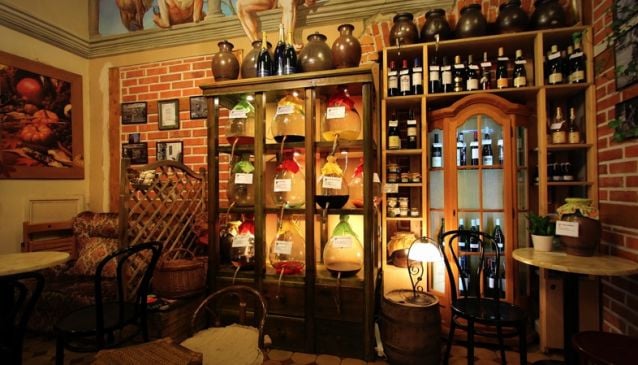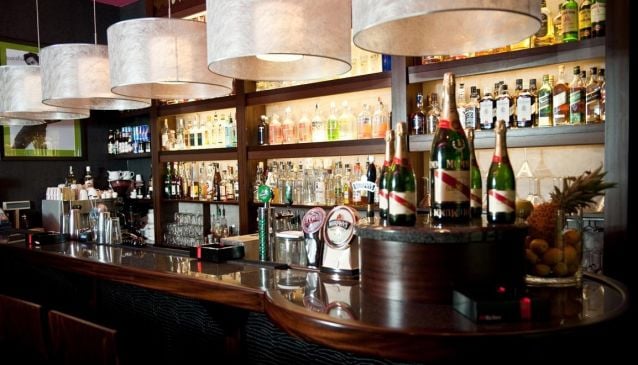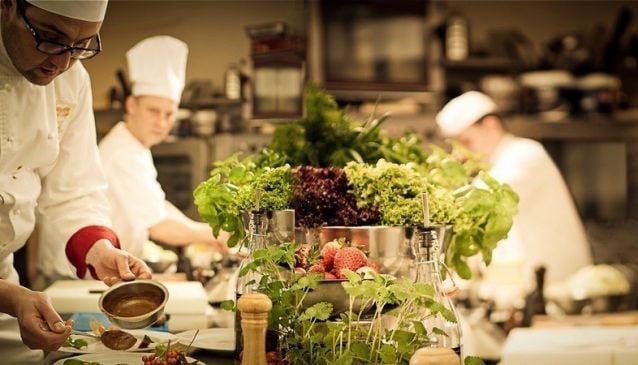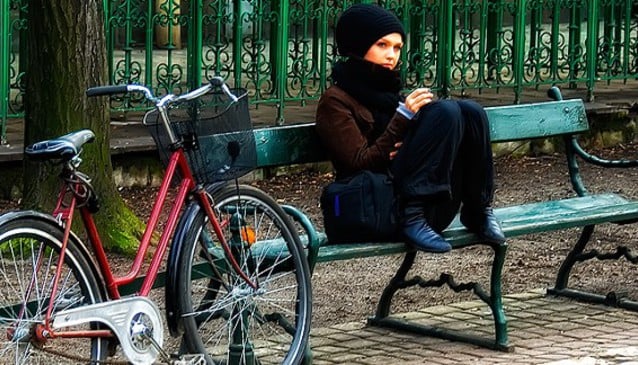Krakow Top Ten Attractions
Wawel Hill
A natural limestone hill rising from the plain by the Vistula river, Wawel was the site of Krakowâs earliest settlement in prehistoric times due to its strategic advantages. Legend has it that a rapacious dragon dwelt in a cave under Wawel, terrorising the local populace until an enterprising cobbler named Skuba fooled it into eating a sulphur-stuffed sheepâs carcass with burning consequences. The first stone cathedral was built there in c. 1000 AD and some 300 years later the first coronation of a Polish king was held on Wawel. Around this time, work began on building the current cathedral and castle, although many of the most visible distinctions date from the 16th century. Wawelâs place in Polandâs history is assured, as the home of kings and the burial place of many Polish heroes. For the modern visitor, Wawel castle and cathedral are unmissable. More info
Bar Culture
Once history, galleries and museums have been brushed to one side, the most outstanding feature of Krakow must surely be its bar culture. By common consensus, Krakow has one of the highest concentrations of drinking establishments per square kilometer and/or per capita in the world. But as any discerning drinker knows, quantity may count for a lot, but it isnât everything. Fortunately, the diversity of bars and cafes in Krakow will surely stimulate the most jaded palate. A particular feature of the Old Town is the "cellar bar", of which there are innumerable varieties in virtually every street, in most cases consisting of several rooms meaning that disorientation when intoxicated is not uncommon. Above ground you can find shoebox-sized drink bars that barely hold five people, modernist lounge bars oozing chill-out music and well-dressed customers, and others that look as if theyâve selected their furniture, fixtures and fittings from what the antique dealers rejected. In Kazimierz, this diversity is even more pronounced, with Alchemia arguably the finest and most famous example of the latter category. Nor should you overlook Podgorze, which is quickly becoming the new place to go out, with particular mention to Drukarnia overlooking the river. More info
Czartoryski museum
The Czartoryski collection was started in 1795 (when the Polish Commonwealth was collapsing and partition beckoned) by Princess Izabela Czartoryska for the purpose of preserving Polish heritage, and has enjoyed something of a bumpy ride over the years. The present building dates from 1878 â although two world wars did little to guarantee the security of the collection. Although much of what was looted by the Nazis was recovered, some 840 artefacts are still missing, including a painting by Raphael. The most famous exhibit is undoubtedly Leonardo da Vinciâs "Lady With An Ermine", but this should not undermine the richness and depth of the rest of the collection. Rembrandtâs "Landscape with Good Samaritan" is another great painting and there are extensive collections of armour, weaponry, carpets and ceramics, as well as a great number of ancient Egyptian, Etruscan, Greek and Roman treasures. The museum is open Tuesday to Saturday from 10 am to 6 pm, and Sundays from 10 am to 4 pm. The museum is closed on Mondays (as are many of Krakowâs museums). More info
Due to restoration works in the museum, Rembrandt's "Lady With An Ermine" is currently on display in Wawel Castle.
Wieliczka
Wieliczka salt mine is undeniably an awesome example of human endeavour. Its justification for inclusion on UNESCOâs World Heritage list includes the fact that it is the only mining site in the world to have been running continuously since the Middle Ages. The massive salt deposits were formed about twenty million years ago with the evaporation of the sea and subsequent upwards forcing by the nearby Carpathian mountains. Nowadays there are estimated to be about 300 kilometers of underground tunnels, reaching a maximum depth of 327 meters (nearly 1,100 feet). The salt mine tour includes many wonders: in addition to the mine itself are vast "crystal caverns" whose walls glisten with natural halite crystal formations. The there are the man made marvels, not least of which is St Kingaâs chapel, surely the most opulent underground church in the world, with its sculptures, reliefs and even chandeliers all carved from the natural rock salt. Wieliczka is about 20 minutes by bus from the centre of Krakow and the guided tour lasts about 3 hours. More info
Auschwitz
Just over 50 kilometers west of Krakow lies the small town of Oswiecim, a place that would easily have remained in relative obscurity were it not for the Nazisâ decision to construct the Auschwitz-Birkenau concentration (and later death) camp there. Since the war ended, the site has been preserved as a museum and memorial, and receives over a million visitors a year. Allow a good three hours for the visit, which includes both camps: Auschwitz I and Auschwitz II-Birkenau. Although it is generally most notorious for the huge numbers of Jews murdered there, it is worth pointing out that a considerable quantity of non-jewish Poles also died there. Visiting the camp is part of the Polish schoolsâ curriculum. Be advised that for many visitors it can be a profoundly moving experience. Admission to the museum is free but various types of guided tour are available at differing prices. More info
Jewish Quarter
Originally Krakowâs Jewish Quarter, Kazimierz was for centuries where Catholics and Jews existed peacefully side-by-side, having a noticeably different architectural character than the main city. Following the disappearance of virtually all the Jewish population in the Second World War and its aftermath, Kazimierz fell into something of a decline, and it wasnât until the mid 1990s that the area started to be revitalized. Less overtly touristic than the Old Town, Kazimierz is considered by many residents to be the prime area for nightlife.
Kazimierz has two main focal points: ul. Szeroka, a long and wide cobbled street featuring the Old Synagogue at one end and numerous restaurants along it; and Plac Nowy, a small square with a flea market and numerous bars and cafes and a bustling nightlife. Connecting these two hubs are networks of small streets containing a huge variety of places to eat, drink and talk. But Kazimierz is not just nightlife â Jewish culture is enjoying a resurgence and there is an annual Jewish Culture Festival at the end of June. The festival lasts nine days and features all kinds of concerts, lectures, tours and workshops. Traditional Jewish klezmer music is a particular attraction, as are the areaâs seven synagogues. More info
John Paul II Route
The late Pope John Paul II is a giant figure in Krakowâs recent history, and his association with the city attracts pilgrims from around the world. In 1958 at the age of 38 he became bishop of Krakow, becoming archbishop in 1963. In 1978, the now Cardinal Wojtyla attended the Vatican conclave to elect Pope John Paul I, who then died unexpectedly just 33 days later. The subsequent conclave was almost equally divided between two opposing candidates, until Wojtyla was suggested as a compromise. The Polish Cardinal won the ballot with 99 out of 111 votes and took the name John Paul II in memory of his predecessor. At 58 he was the youngest Pope since 1854, and the first non-Italian Pope since the 1520s. Visitors to Krakow can undertake a "John Paul II" excursion, whereby one visits various significant sites in his life. You should also consider visiting the town of Wadowice some 50 kilometers southwest of Krakow, where the late Pope was born and grew up; a sixteen-stage tour of the town highlights key points in the young Karol Wojtylaâs life. More info
Polish Cuisine
No trip to Poland can be called complete without sampling Polish cuisine. Due to a large extent to the shortage of quality ingredients during communist times, itâs taken a while for traditional Polish cuisine to regain its feet and, like everywhere, there are indifferent as well as good places to eat; but at their best can be highly recommended. So letâs pick a few highlights:
Pierogi, commonly translated as dumplings, are in fact closer to ravioli and come in a variety of fillings: pierogi ruskie â filled with potato and cheese; pierogi z miesem â filled with meat; grzybami â filled with mushrooms; z serem (sweet cream cheese â popular as a dessert; and in the summer strawberries and bluberries make popular fillings and are served with cream. Every year in mid-August, Krakow has a pierogi festival, where restaurants and cafes set up stalls serving their finest pierogi, whilst competing for various prizes. Live music and beer help the proceedings along.
Zurek is a very substantial soup that can qualify as a meal in itself. The base is a hearty broth, to which is added potatoes, white sausage, vegetables and, perhaps rather unnervingly, a hardboiled egg. Particularly recommended as a winter warmer.
Golonka, usually translated as pork knuckle, is a real feast for carnivores. Generally, menus will give a price per 100 grams; a typical golonka will weigh maybe 400-500 grams. There is an outer layer of fat that many find very tasty; underneath you will find deliciously sweet and tender pork meat on the bone. Sharp horseradish sauce makes a fine accompaniment.
Bigos, or hunterâs stew, is a true Polish classic. A base of shredded fermented cabbage with tomatoes, chunks of sausage and pork, is enriched with wine, honey, and mushrooms. Served with boiled potaoes or hunks of coarse bread, bigos is very nutritious as well as being very tasty.
On many a street corner youâll find old ladies selling what look like giant pretzels from a blue trolley. These are in fact called obwarzanek and are warmed twisted rings of white bread garnished with either poppy seeds, sesame seeds or salt. Very much a symbol of Krakow and inexpensive, these are very much Krakowâs original "fast food" More info
St. Maryâs Altar
St Maryâs church on the Main Square has many things to recommend it: its painstakingly restored interior is almost overwhelming in its opulence. But surely the highlight must be the 13 meter (42 foot) high 15th century altarpiece by Veit Stoss (Polish: Wit Stwosz), the largest Gothic sculpture in the world. Arranged as a triptych, it shows various scenes from the life of the Virgin Mary, with the centrepiece depicting the death of the Madonna surrounded by the twelve apostles. Carved from wood and lavishly gilded the figures are exceptionally realistic. A good time is to visit around noon, when light floods through the magnificent stained glass windows and is reflected back by the glittering gold of the altarpiece. More info




